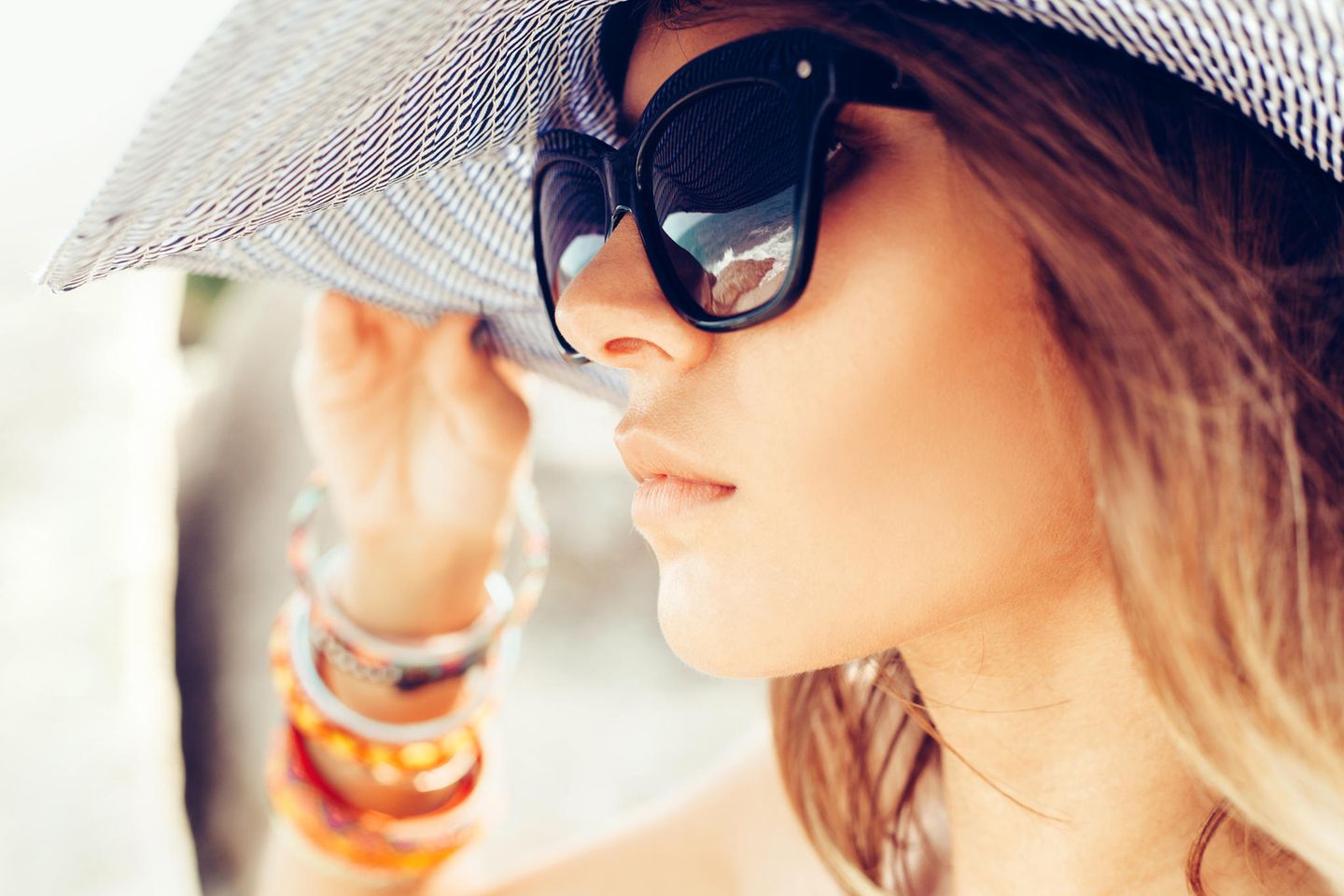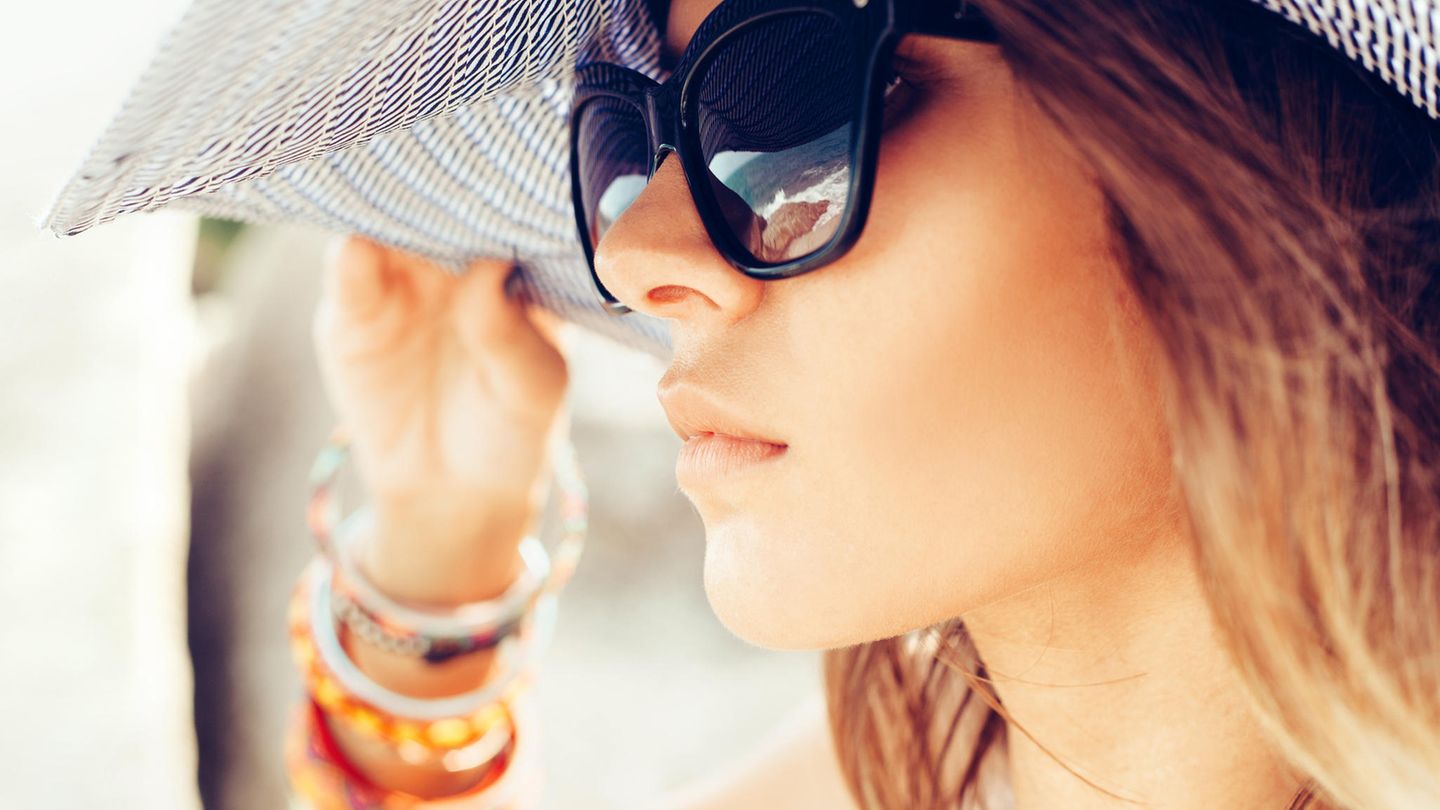Heat rash
What to do against blisters?

© Kaponia Aliaksei / Shutterstock
Whoa, it’s suddenly warm. Now it’s time to show skin, if it weren’t for the pustules. Heat rash is the name of the nuisance that we would like to get rid of. We say how!
Heat rash is most commonly associated with babies and young children, but adults are also affected. The good news first: Heat rash is absolutely harmless to health. But they can bother us, causing a nasty itching and burning sensation on the skin’s surface and causing inflammation. The pimples are particularly popular on parts of the body where there are many sweat glands. This primarily includes armpits, décolleté, back, buttocks, thighs and arms. Where we definitely don’t need the heat pimples, and when they’re already there, we can’t always completely cover them with clothing.
Babies and toddlers have it particularly easy to get heat spots because the skin pores are still relatively small, which can quickly cause the sweat glands to become clogged. The pimples are then primarily caused by wearing too warm and thick clothing or by wearing a diaper.
What are heat rashes?
Heat rashes are small blisters/pustules on the skin that occur when the ducts of sweat glands become blocked. Common in the summer when the heat and humidity are high, which is why they are also known as heat rash or sweat blisters. They often develop in skin folds or areas where there are a particularly large number of sweat glands, such as in the armpits, on the décolleté or between the shoulders.
What types of heat rash are there?
There are four types of heat rashwho show different symptoms.
- Miliaria cristallina: This is the mildest form of heat rash. Small, colorless pimples appear on the epidermis, the outer cell layer of the skin (also known as the stratum corneum), due to the blockage of the sweat glands. The vesicles are free of bacteria, sometimes they are filled with very, very little liquid. The heat rash can burst open after a certain time.
- Miliaria rubra: There is a narrowing below the granule cell layer (stratum granulosom), deeper sweat glands. Compared to the above type of heat rash, this is the third layer of the epidermis affected by heat rash in this case. The blisters are reddened, the affected skin itches. Miliaria rubra is triggered by bacteria or an irritant effect of perspiration.
- Miliaria pustulosa: A higher bacterial load, also known as bacterial superinfection, is the cause of this form of heat rash. The pimples usually become inflamed and begin to develop into purulent pustules.
- Miliaria profunda: This type of heat rash is rare. In miliaria profunda, the deep-lying ducts are clogged. The result is firm, often painful knots.
What are the symptoms of heat rash?
The rash shows up mainly through
- Formation of blisters/small pimples
- Burn
- itching
The vesicles are usually the size of a grain of millet and are located on the surface of the skin, more precisely: there where there are many sweat glands and therefore sweat frequently. Heat rashes are usually filled with a clear to milky liquid. Depending on the degree of blockage of the sweat glands, the pimples can be very painful and cause burning or itching on the skin’s surface.
What to do against heat rash?
The small superficial heat pimples appear quickly when the body is overheated and itch – but they also disappear quickly when the body cools down.
Tip: If the white pimples persist, treatment with skin gel containing zinc or silica often helps. Alternatively, homeopathic medicines can help.
Those who are prone to heat rash can also prevent it:enzyme peels gently cleanse even sensitive and blemished skin and prevent clogged sebum glands.
A doctor should be consulted in the event of severe itching, particularly with small, red pimples (miliaria rubra). This can you after an investigation anti-itching anti-allergy drug (antihistamines) prescribe against the heat rash. As a rule, a zinc-based cream is also prescribed, because it has an anti-inflammatory effect, supports wound healing and reduces itching.
Immediate measures for heat rash
- Get out of the heat and find a cooler place.
- Do not wear too warm and tight clothing. Airy clothing made of cotton and linen, on the other hand, are good materials in summer, in which the body does not sweat too quickly, which means that the sweat glands do not clog up as quickly and the production of heat pimples is largely avoided.
- Thick and warm bedding should also be avoided.
- Please do not scratch the heat rash no matter how itchy. Rather, relieve this scratching by patting or cooling the affected area of skin.
- Refrain from caffeinated drinks, alcohol, hot spices and heavy meals that increase the production of sweat and promote annoying heat rash – sage tea drink.
- A special powder from the pharmacy also helps against sweat production, which can absorb sweat and soothe the skin (for example with silver) and keep it dry, so that the spread of bacteria is prevented as far as possible and heat pimples do not occur in the first place.
- Alternatively there is a specially developed antiperspirantthat is supposed to work wonders when you sweat profusely.
- thermal water spray is good for the skin and is particularly practical for on the go. With contents such as minerals, trace elements and silica, it soothes the skin so that the itching of heat pimples comes to an end for the time being.
- More tips: Use sun protection without preservatives and fragrances. This does not irritate the skin unnecessarily, it does not itch and heat pimples have a hard time. We explain everything you need to know about sunscreen.
- home remedies: Lukewarm to cool showers are now a dream for your body. Alternatively, you can pat yourself dry with a damp washcloth.
It helps babies to change diapers more often to avoid a warm, humid climate. Even if they often crawl without diapers, they are great at preventing heat rash.
